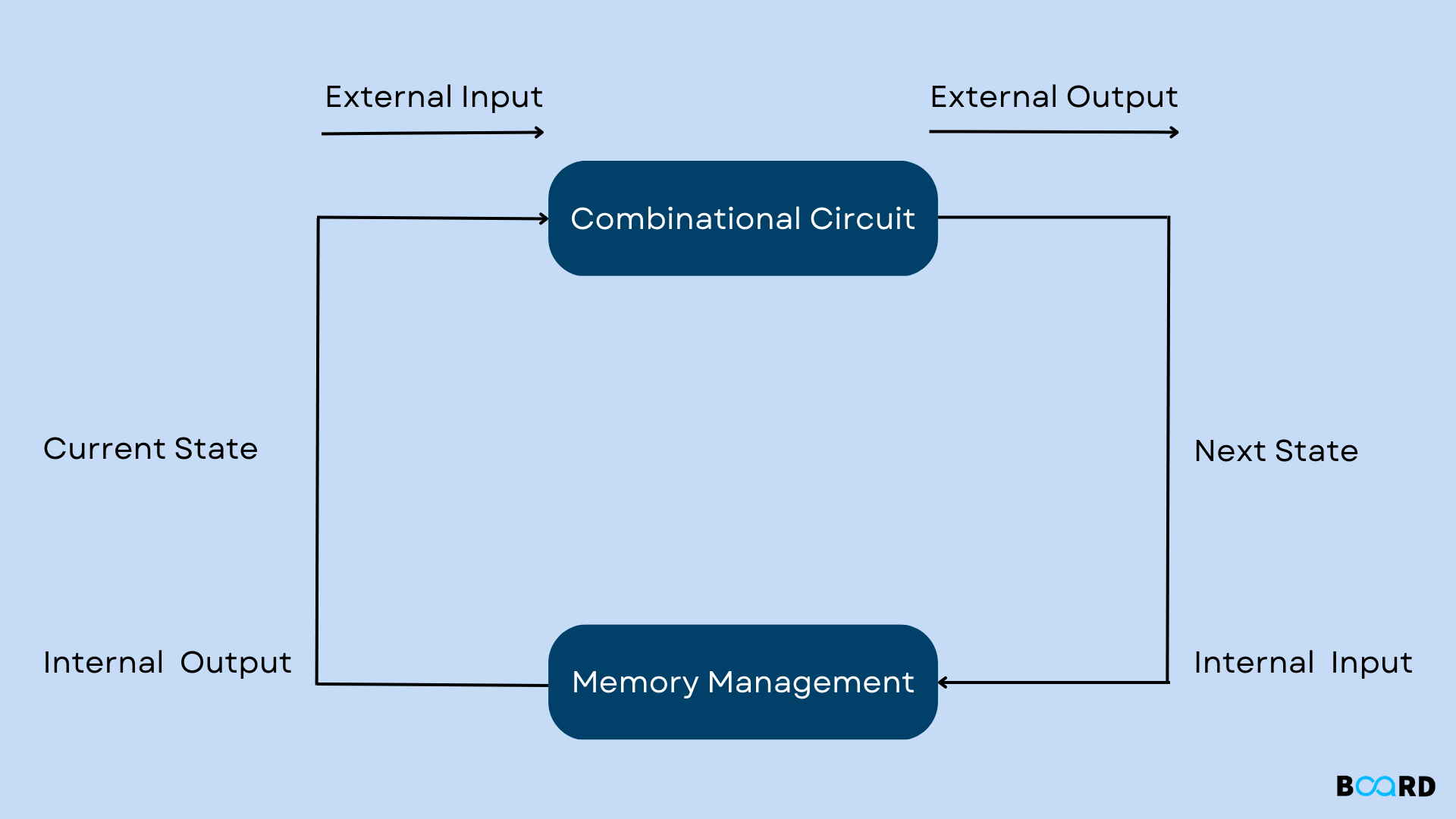Sequential Circuits: Introduction

Introduction
In this blog, we will discuss the basics of sequential circuits. The sequential circuit is different from the combinational circuit as the combinational circuit produces an output on the basis of input variables whereas a sequential circuit produces an output on the basis of current input as well as on the basis of previous output variables. It implies that a sequential circuit is capable enough to store binary information. It uses memory elements to store the binary information. The sequential circuit is unique as it contains a series of inputs and outputs. The combinational circuit has two types of inputs:
- Internal inputs: These are the function of a previous output state.
- External inputs: The circuit doesn't control such external inputs.
Categories of sequential circuit:
The sequential circuit is is broken down into three categories:
- Event driven
- Clock driven
- Pulse driven
Now let us discuss them one by one in detail:
Event driven
The event driven circuits are the asynchronous circuits which when enabled are capable enough to alter their state. In event-driven circuits the behavior doesn’t depend upon the arrangement of the input signals.
Clock driven
The clock driven circuits are the synchronous circuits and they are synchronized to a specific clock signal. In clock driven circuits, the knowledge of the circuits help to determine the behavior.
Pulse driven
This represents the combination of the two that and reply against the triggered pulses.
Types of sequential circuits
The sequential circuits are of two types:
1. Asynchronous sequential circuit:
The asynchronous sequential circuit is faster than the synchronous sequential circuits. The clock signals are not used by circuits but they use input pulses. The asynchronous sequential circuits are used when the speed to carry out operation is more important and independency for the internal clock pulse. These types of circuits are a little difficult to design and the output is highly unpredictable.
The asynchronous circuits are used in some sections of the synchronous systems where the system should have high speed.
2. Synchronous sequential circuit:
The synchronous sequential circuit is slower than the asynchronous sequential circuits. The clock signals and level inputs are used by synchronous sequential. The output pulse generated by the synchronous sequential circuits has the same duration as the clock pulse. In order to perform the next operation, these circuits wait for the next clock pulse to arrive. The level output changes the state at the beginning of an input pulse and maintains the phase until the next clock pulse arrives. The synchronous sequential circuit stores the output in either flip-flops or latches. The memory element state is completed by the clock cycle.
The synchronous sequential circuits are generally used in synchronous counters, flip flops and in moore-mealy state management machines.
Conclusion
In this blog, we discussed the basics of sequential circuits and its classification. We also explained how synchronous sequential circuits differ from the asynchronous sequential circuits. We believe that this article was helpful to you.
